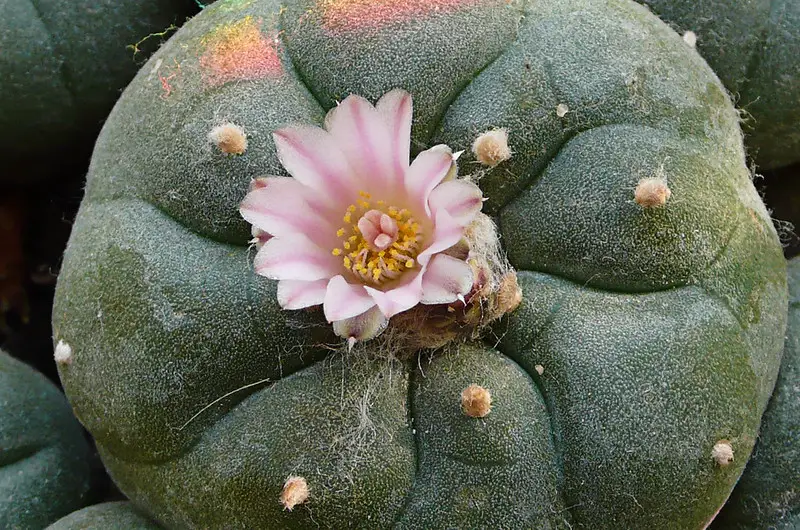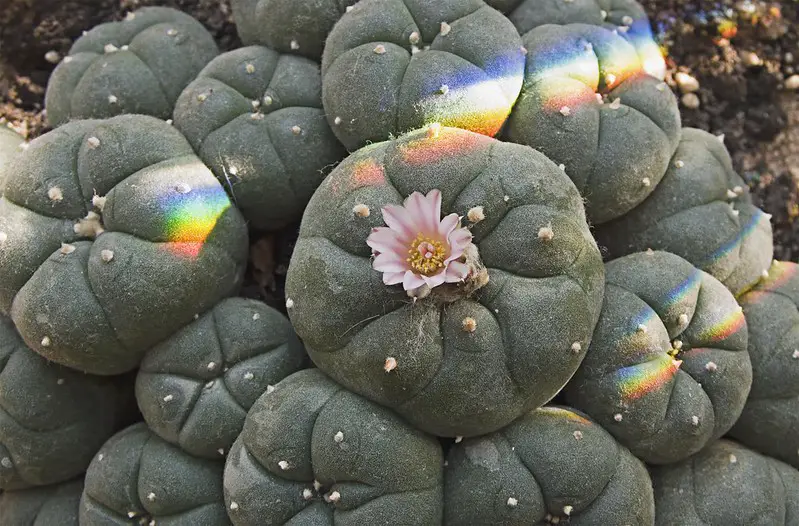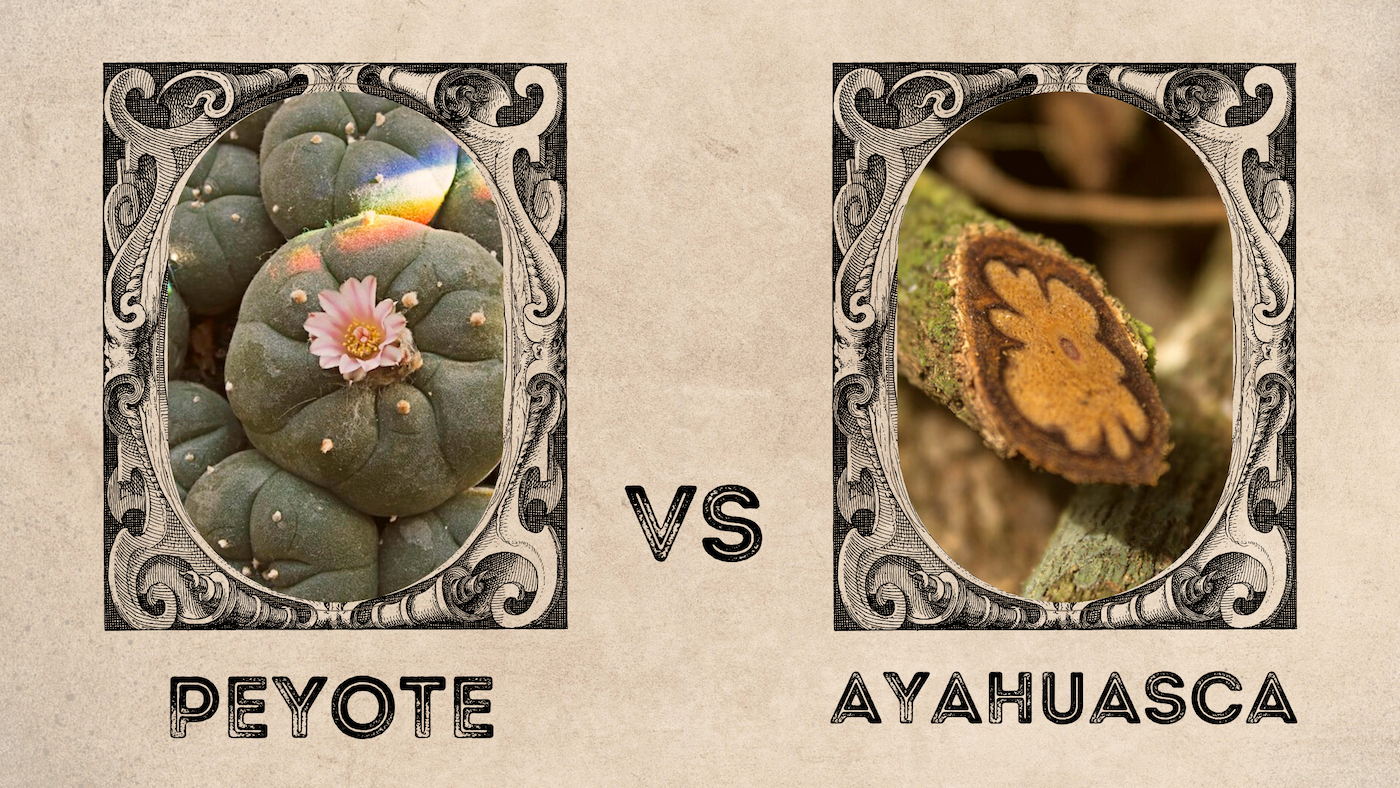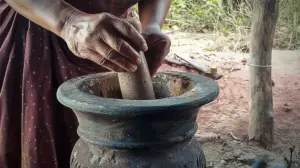Interested in trying peyote? Click here.
Psychedelic plant medicine has long been used in traditional ceremonies to promote healing and inner exploration. Two of the most well known plant medicines used are peyote and ayahuasca. While they are both powerful psychedelics, they have different characteristics and effects on the mind and body. It’s important to understand the differences between peyote and ayahuasca in order to make an informed decision on which one is right for you.
Table of Contents
What is Peyote?
Peyote (Lophophora williamsii) is a small cactus found in the southwestern United States and northern Mexico. It has been used for centuries by Native American tribes for spiritual and medicinal purposes. Peyote contains a number of psychoactive alkaloids, including mescaline, which is responsible for its psychedelic effects. When taken, peyote can produce visual and auditory hallucinations, as well as altered states of consciousness. Peyote is usually taken in the form of a brew or tea, but it can also be chewed or smoked (with tobacco, for instance).



What is Ayahuasca?
Ayahuasca is a psychedelic brew made from the leaves of the Psychotria viridis shrub and the stems of the Banisteriopsis caapi vine. It has been used by indigenous tribes in the Amazon basin for centuries as a spiritual medicine. Ayahuasca contains several psychoactive alkaloids, including DMT, which is responsible for its psychedelic effects. When taken, ayahuasca can produce powerful visual and auditory hallucinations, as well as altered states of consciousness. Ayahuasca is usually taken as a tea, but it can also be smoked or vaporized.
We will be hosting a women’s healing and spiritual retreat in Ecuador where a Lakota grandmother will be sharing Peyote medicine. There will also be other medicines available, click on the image below to read more.

Table: Differences Between Peyote and Ayahuasca
| Aspect | Peyote | Ayahuasca |
|---|---|---|
| Source | Mescaline-containing cactus | Vine and leaves containing DMT |
| Origin | Native to southwestern U.S. and Mexico | Indigenous to Amazonian regions |
| Preparation | Consumed fresh or dried, often in tea form | Brewed into a tea with other plants |
| Trip Duration | 10-12 hours | 4-6 hours |
| Effects | Visual and auditory hallucinations, altered perception of time and space, euphoria, introspection | Intense visual and auditory hallucinations, physical and emotional purging, introspection |
| Medical Uses | None approved | Under investigation for treatment of depression and addiction |
| Legal Status | Illegal in some U.S. states, but legal for religious purposes in Native American Church | Illegal in most countries, but legal in some for religious or traditional use |
Differences Between Peyote and Ayahuasca
Peyote and ayahuasca are both powerful psychedelic medicines, but they have some key differences, though please keep in mind that it is impossible to generalize. The effects of any psychedelic medicine will vary depending on your physical state, mental state, mood…even what you are that morning!
The effects of peyote tend to be more subtle than those of ayahuasca. Peyote produces mild hallucinations (depending on how much is consumed, of course!) and altered states of consciousness, while ayahuasca may often produce powerful and intense hallucinations. The effects of peyote last for much longer than ayahuasca and are often activated with daylight, as peyote itself is a desert cactus. After a night time peyote ceremony, with sunrise, you may continue to feel its effects for another 5-10 hours! It’s beautiful…
The effects of ayahuasca, on the other hand, usually lasts about 4 hours per serving. Depending on the brew, you may have 1 strong, long peak in the trip, or a few.
Peyote also has a milder taste than ayahuasca, which can be quite bitter. Furthermore, peyote is usually chewed or brewed as a tea, while the preparation of ayahuasca is done through reduction and can take several days to prepare.
The risks associated with taking peyote and ayahuasca are similar. Both substances can cause nausea, vomiting, and dizziness in some people. Additionally, both can produce psychological effects such as anxiety and paranoia, but also mind and heart expanding therapeutic breakthroughs! It’s important to work with an experienced ceremony guide when taking either substance, and to make sure that you are in a safe and comfortable environment.
Which Should You Choose?
Choosing between peyote and ayahuasca is a personal decision. If you’re looking for a milder psychedelic experience, then peyote might be the right choice for you. If you’re looking for a more intense, introspective and powerful experience, then ayahuasca might be the right choice.
Ultimately, it’s up to you to decide which one is right for you.



